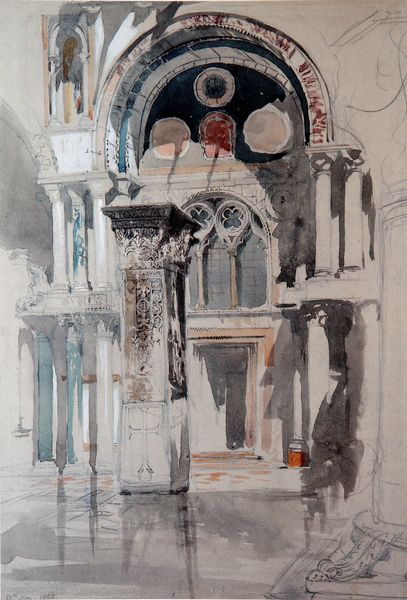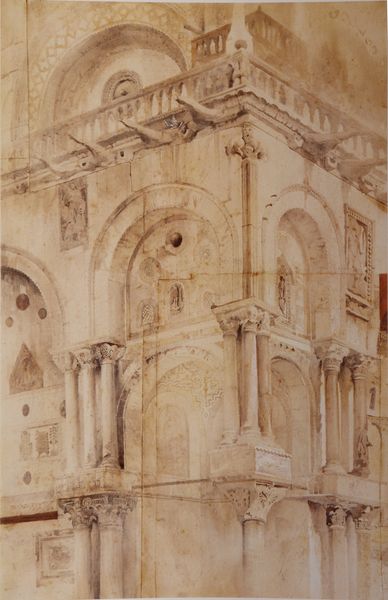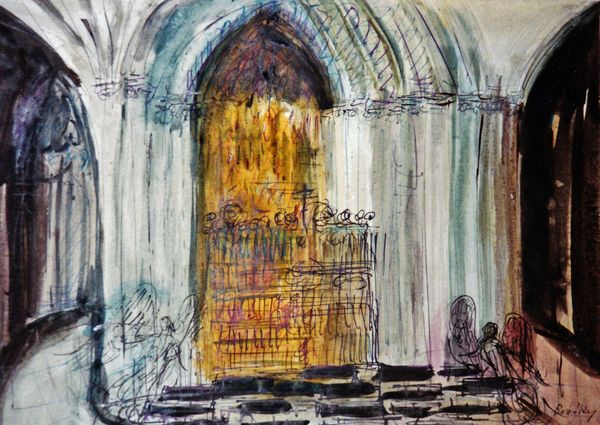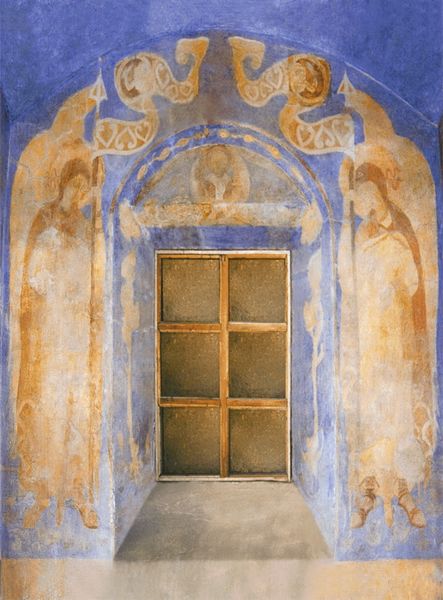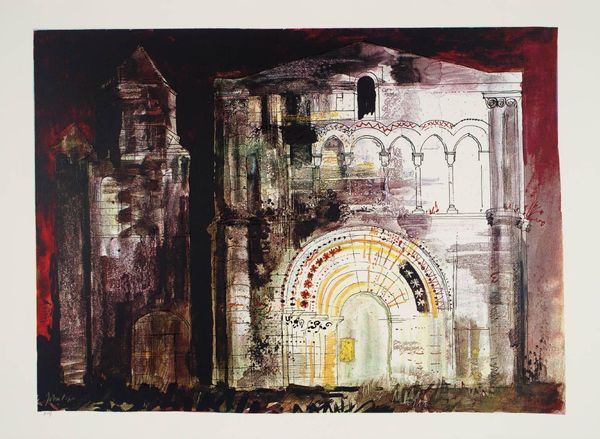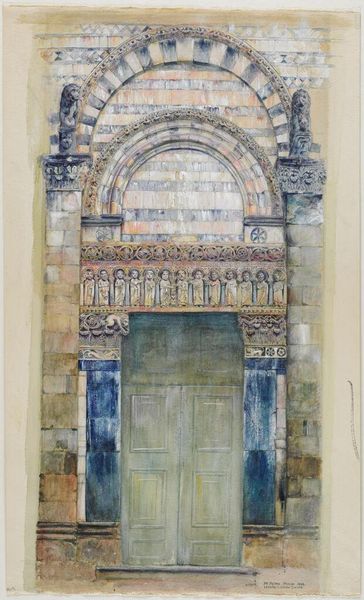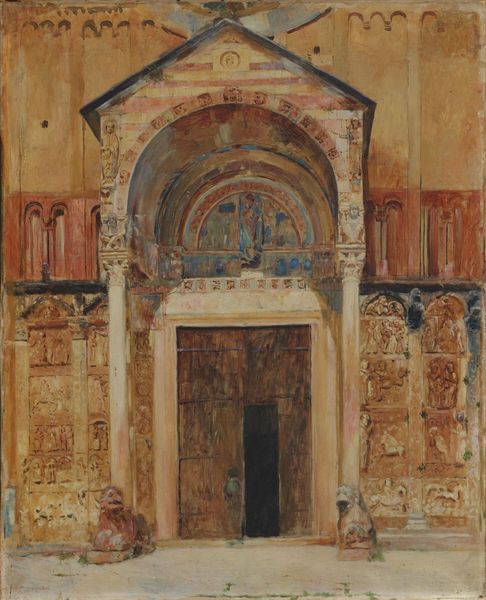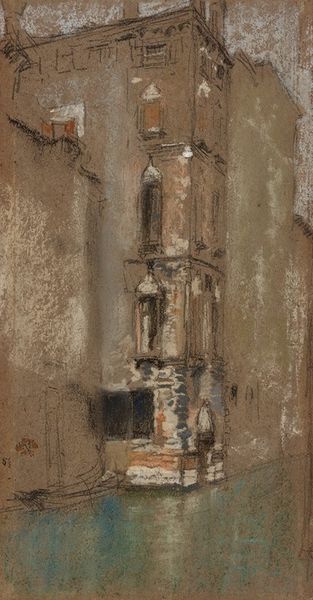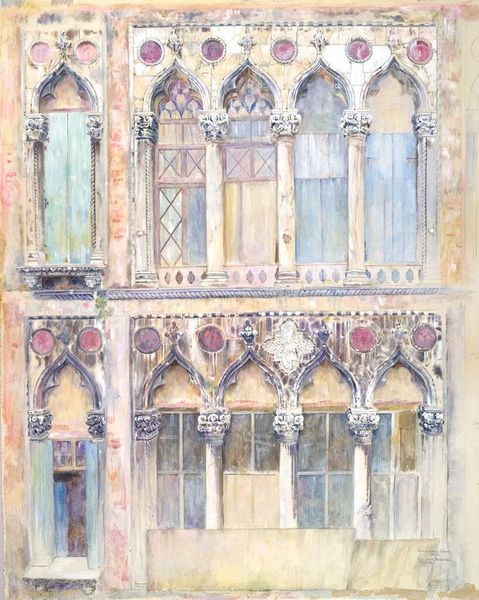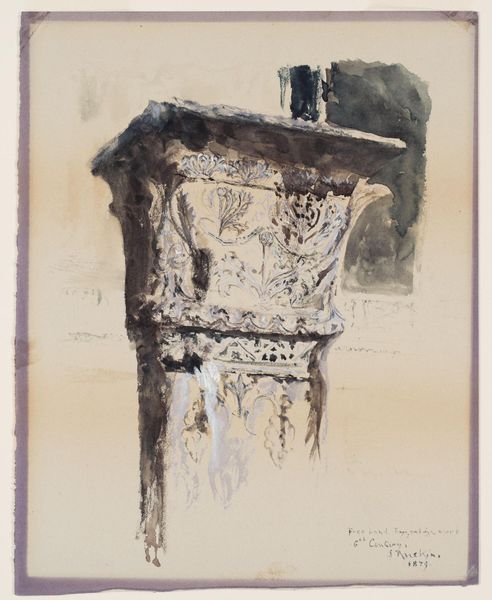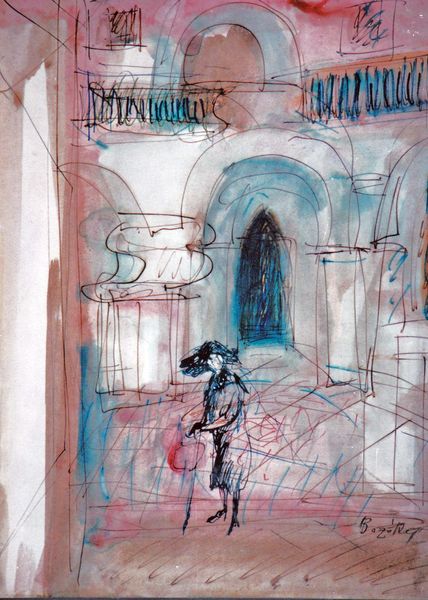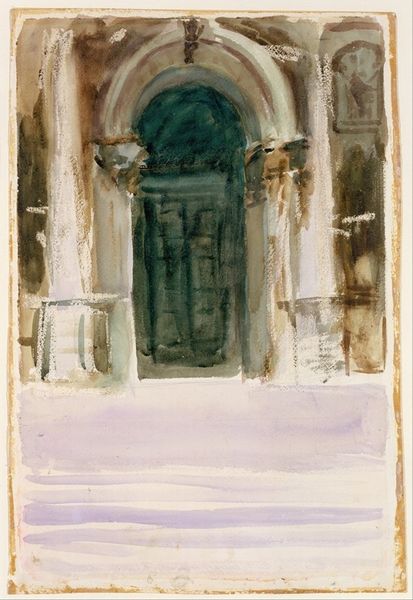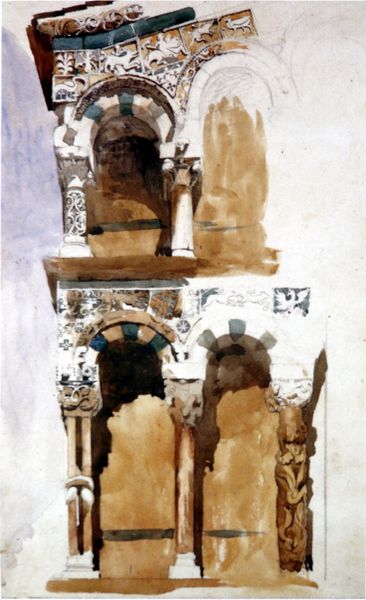
Copyright: Public domain
Curator: What a remarkably delicate depiction. John Ruskin created this watercolor drawing, “Study of the Marble Inlaying on the Front of the Casa Loredan,” in 1845. Editor: It's immediately striking how Ruskin captures the decay. The weathering of the stone, the faint staining—it’s as if he’s documenting time itself acting on these materials. Curator: Ruskin was fascinated by the craft and labor involved in creating these structures, particularly the way the decorative elements reflected the values of Venetian society. He was very interested in understanding the process. Editor: Yes, and this piece reveals a tension between grandeur and decline. We see the intricate craftsmanship of the marble inlay, but also the inevitable effects of pollution and time. There's a narrative here about Venice as a powerful republic facing social and ecological challenges. I wonder how this building has been utilized since then. Curator: Certainly, his choice of watercolor speaks volumes too. It's a medium that allows for layering, blending, creating effects of transparency which mirror the textures of eroding stone. It feels appropriate for documenting a place defined by water. Editor: Do you think he was intentionally choosing these materials to create those allusions or impressions? Curator: Precisely. This study challenges a romantic view by documenting material change as intrinsic to the artwork's subject matter, pushing viewers to question high art versus craft. He wanted people to recognize the importance of labor in architecture, going beyond the wealthy client commissioning the space. Editor: In light of this consideration, how have museums like this one reshaped Ruskin's reputation in the contemporary artistic landscape? Curator: A great question. Our acquisition and exhibition of works such as these actively reinterpret canonical views, inviting wider audience engagement with both Ruskin's art and his sometimes contradictory social commentaries. Editor: This piece leaves you considering how urban structures are shaped by those within the buildings, and simultaneously reshaping them from the outside. Thank you, John Ruskin! Curator: It really does invite a deeper understanding of Venetian history through the lens of materiality and societal structure. An insightful study, indeed.
Comments
No comments
Be the first to comment and join the conversation on the ultimate creative platform.
